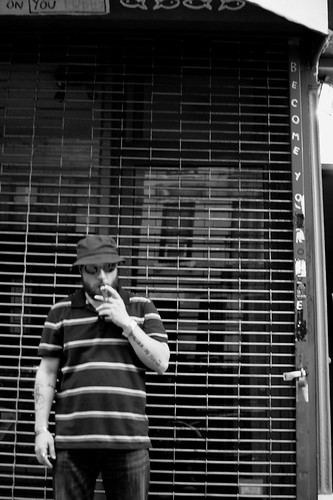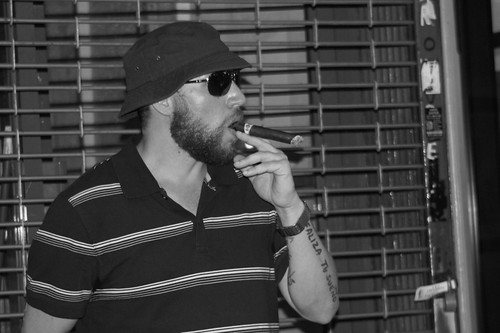The closing of the De La Vega Museum on St. Marks Place isn’t the last the city will see of James De La Vega. He said he is going to make a New York City comeback, just not in the East Village.
“There will be another museum in New York City,” said Mr. De La Vega, whose colorful and comfortably claustrophobic museum was filled with the street art and inspiring messages that made him famous. “I don’t know yet what neighborhood, but the ones that make sense to me are Latin neighborhoods. My stepfather shared the culture of Puerto Rico with me. I have an interest to build those people up, listen to their stories, their powerlessness and frustrations.”
He also has plans to write a book filled with his observations on corruption, gentrification, poverty and love, he said.
Mr. De La Vega, 38, said he has his reasons for saying goodbye to the museum after five years in the East Village.
The Spanish Harlem-born artist sold his signature street art, often adorned with his catch phrase, “Realiza Tu Sueno / Become Your Dream,” out of the museum/shop.
There you could find everything from post-card size artwork with his signature fish jumping out of a bowl headed for a water glass, to spray paint cans, to murals priced at thousands of dollars. It became a favorite stop for East Village tourists looking to own a little piece of Mr. De La Vega’s “graffiti,” as some critics call it.
But faced with fewer tourists and rising rents — the museum’s rent and overhead costs rose to $6,500 per month at the St. Marks Place space — he had little choice but to close, Mr. De La Vega said.
“The landlord also offered a space on East Ninth Street, but the rent was $7,000 a month. The deals were bad, considering the economy,” he said.
Three weeks ago he decided to move on.
“Things are changing in this city for a lot of different reasons,” he said. “It was definitely my most expensive project. The rents downtown are already a little crazy. Right now, people aren’t spending money. Our biggest customer has always been tourism. I’ve had to step back and look at this thing again, and return to the root of this message.”
 Suzanne Rozdeba Mr. De La Vega outside his shuttered museum.
Suzanne Rozdeba Mr. De La Vega outside his shuttered museum.A few weeks ago, with news of the closing just beginning to spread, Mr. De La Vega stood in front of the shuttered museum. Holding his signature cigar in hand, he slowly exhaled.
Some locals walked by, yelling, “No! It’s gone?” and stopped to talk to the artist. He shook their hands and shrugged.
“Do you remember the stuff on the sidewalks?” he asked, referring to his chalk street art. “I think of the museum that way. One day it’s there, the next day the rain takes it away.”
And earlier today, the neighborhood learned from the blog EV Grieve what will take its place: a store selling new and vintage clothing.
Mr. De La Vega is not completely disentangled from the site. He is embroiled in a dispute about a “substantial” security deposit. “We need our money back,” he said.
Still, he’s surprised at how long his quirky museum lasted. “We were happy to make five years. I don’t know many artists living off their artwork,” he said.
Mr. De La Vega said he is now focusing on his museums in Tokyo, Paris and Italy, continuing to do motivational talks at schools across the country and tweeting. His Twitter page is filled daily with rants and reflections. On Sept. 4, he wrote, “America has neglected the poor and I’m going to make her pay for it!” and “Women should lead the country! Men have destroyed it,” and “Racism has weakened all the ethnic groups in America except whites.”
He said that he plans to divide his time among homes in SoHo, Spanish Harlem and Barcelona.
“The East Village is an interesting neighborhood,” he said. “Everyone wants to be important, famous, heard. Everyone wants to be a rebel. It’s an intense place.”
______
Do you have a memory of Mr. De La Vega’s artwork? How do you feel about him leaving the neighborhood?




